|
Today’s focus is on the concept of Relatedness. When leaders Energise Action and hold people accountable for their individual and collective performance through clear objectives, effective feedback and coaching they create a strong culture of interdependence and cooperation which leads to increased Relatedness.
Autonomy is the ability to make an un-coerced decision. In the work environment, autonomy is the ability to operate in a “Want To” culture. As leaders, we can threaten autonomy by overusing our positional power. This overuse of power creates a “my way or the highway” approach, with little respect or consideration of staff.
Today’s focus continues to unpack David Rock’s SCARF model with a look at the second factor – CERTAINTY. Certainty is a firm conviction of the future.
David Rock’s SCARF model is an excellent framework through which to explore human behaviour as driven by people’s social concerns. The first component is Status which relates to how we see ourselves and how others see us.
There is no doubt about it. The companies who are outperforming others, are characterised by leadership that is more receptive to change and more receptive to new ideas.
As leaders, we need to create a safe and welcoming environment in our organisations – a culture of inclusion. Not only it is the right thing to do, it turns out it is also good for business.
Many of us are still leading teams remotely. With all the video conference calls we need to be on, there is a chance we are pulling back from some of the critical opportunities that create connection.
A recent report by Michelle McQuaid and her colleagues at The Wellbeing Lab provided some interesting insights on how communities can increase the wellbeing of their members. The report confirmed that leaders have a big influence on the wellbeing of those who they lead. The interesting aspect was that the impact was actually greater on the leader themselves. There are two actions you, as a leader, can take on right away.
What do you look for when bringing a new member into your team? When we focus on the way they will fit into the current team, we are limiting our ability to take the team to the next level.
Mihály Csíkszentmihályi, a Hungarian psychologist, coined the phrase “FLOW” that describes a healthy mental state in which a person is so immersed in the task at hand that it creates a focus and engagement that increases effectiveness.
|
Copyright © 1971-2021 The Pacific Institute®, LLC. All rights reserved. Privacy Policy | Terms & Conditions
Site powered by Digital Dorado
